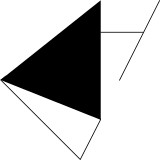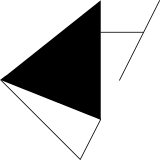Born in Berlin, Max Liebermann came from a wealthy family of factory owners. He initially received private drawing lessons from Carl Steffeck, a professor at the Berlin Academy. He completed his studies at the Weimar School of Art. Liebermann's painting was initially influenced by Gustave Courbet and the Barbizon School. From the 1870s, the artist travelled to Holland several times, where he copied works of Dutch painting and continued his own studies. Despite considerable difficulties, he obtained permission to paint in charitable institutions.
The painting of the Sewing School, completed in 1876, shows young girls in the traditional costume of the Catholic orphanage. They sit together in rows of benches in the bright common room, bent over their sewing work on a green pin cushion. The tightly structured composition emphasises the aspect of communal activity, behind which individual action takes a back seat. The architectural austerity of the room is softened by the lamp hanging from the ceiling, the picture on the wall and the bouquet of flowers on the desk. The palette is based mainly on greys and browns, contrasted with greens and ochres and various shades of white. Liebermann's concentrated composition conveys both calm and harmony through the clear structure of the picture and an almost rhythmic movement caused by the inclination of the heads and the light streaming into the room. Delicate reflections of light can be seen on the girls' white bonnets and collars.
The painting has a chequered history. It was purchased in 1908 from a previously unknown source with money from the city's acquisition fund. Over the following decades, it became a permanent fixture in the Städtische Galerie as an example of German Impressionism. Max Liebermann, who died in 1935, was of Jewish origin and his works were no longer wanted or exhibited in public collections. In the inventory catalogue of 1939, which can be seen in the next exhibition room in the chapter "K - Knowledge", the painting is no longer listed, although it was still in the museum. It was finally sold to Richard Lohe in 1940 and removed from the inventory. Fortunately, the museum was able to buy it back from Richard Lohe in December 1949, and The Dutch Sewing School returned to the museum's collection. Today the Von der Heydt Museum owns four paintings and numerous works on paper by Max Liebermann.
- Ort & Datierung
- 1876
- Material & Technik
- Holz (Mahagoni)
- Abmessungen
- 64,5 x 81 cm
- Museum
- Von der Heydt Museum
- Inventarnummer
- G 0122

